CHEVROLET CORVETTE 1994 4.G Owners Manual
Manufacturer: CHEVROLET, Model Year: 1994, Model line: CORVETTE, Model: CHEVROLET CORVETTE 1994 4.GPages: 274, PDF Size: 15.61 MB
Page 141 of 274
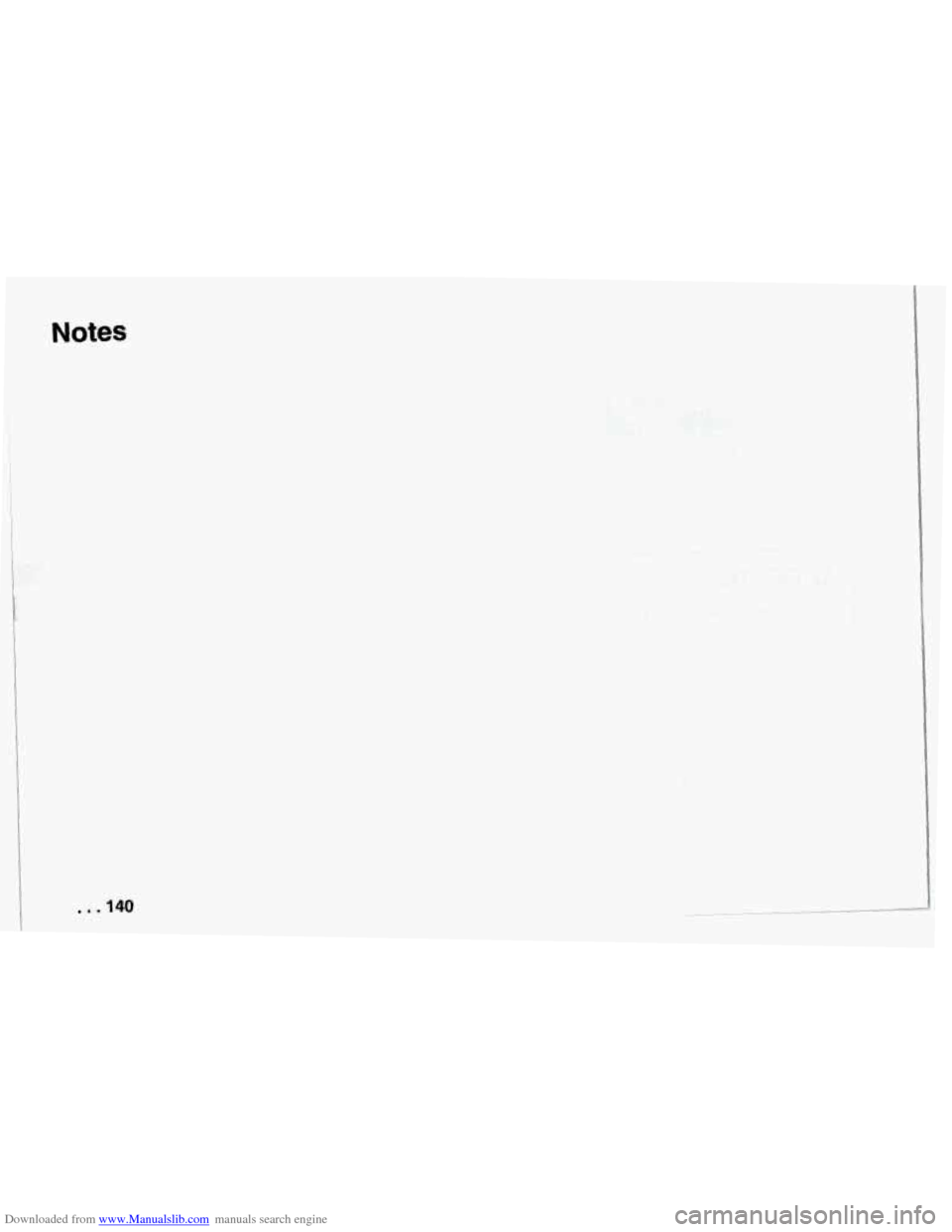
Downloaded from www.Manualslib.com manuals search engine Notes
... 140
Page 142 of 274
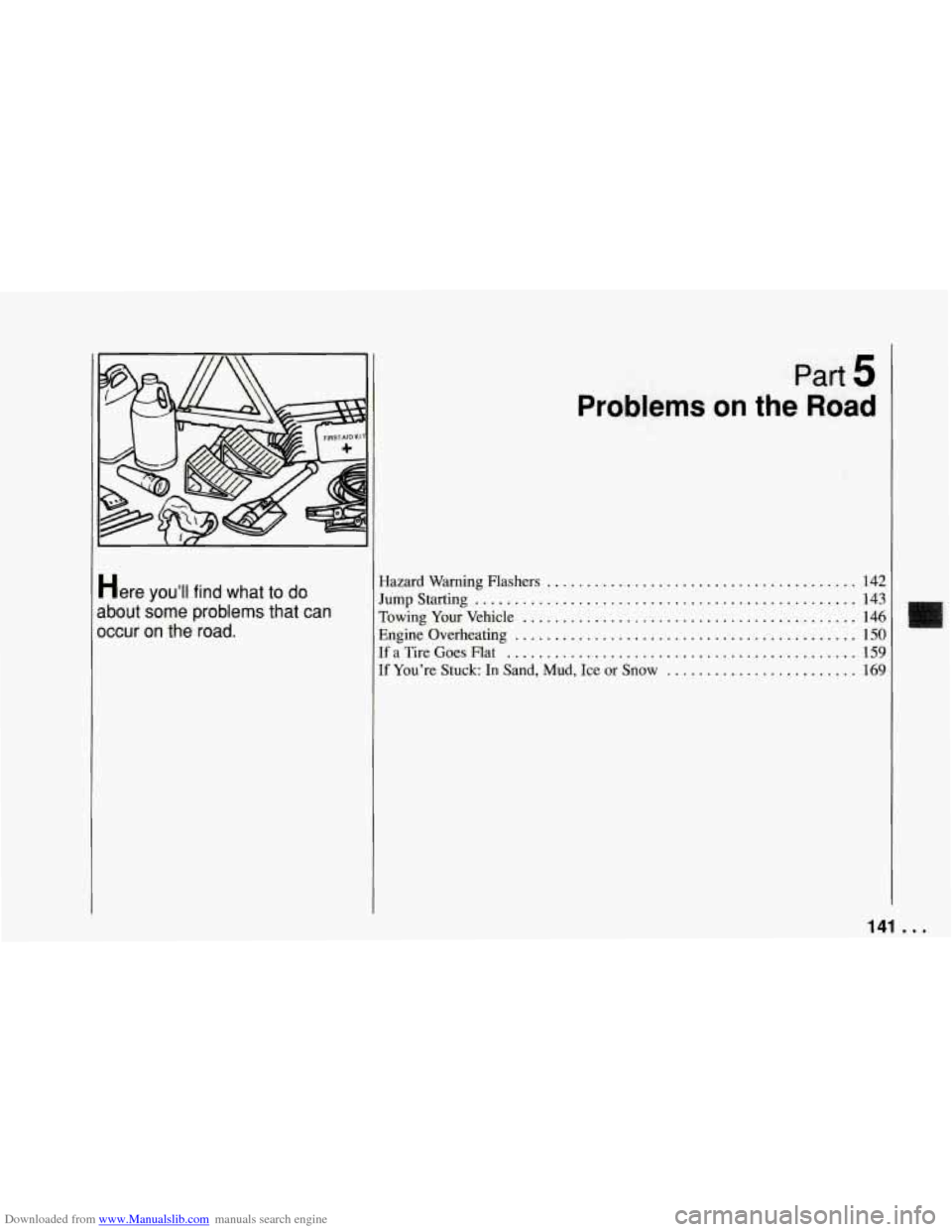
Downloaded from www.Manualslib.com manuals search engine Here you’tl find what to do
about some problems that can
occur on the road
.
Part 5
Problems on the Road
Hazard Warning Flashers ....................................... 142
rumpStarting ................................................ 143
rowing Your Vehicle
.......................................... 146
Engine Overheating ........................................... 150
[f a Tire Goes Flat ............................................ 159
[f You’re Stuck: In Sand. Mud. Ice or Snow ........................ 169
141 ...
Page 143 of 274
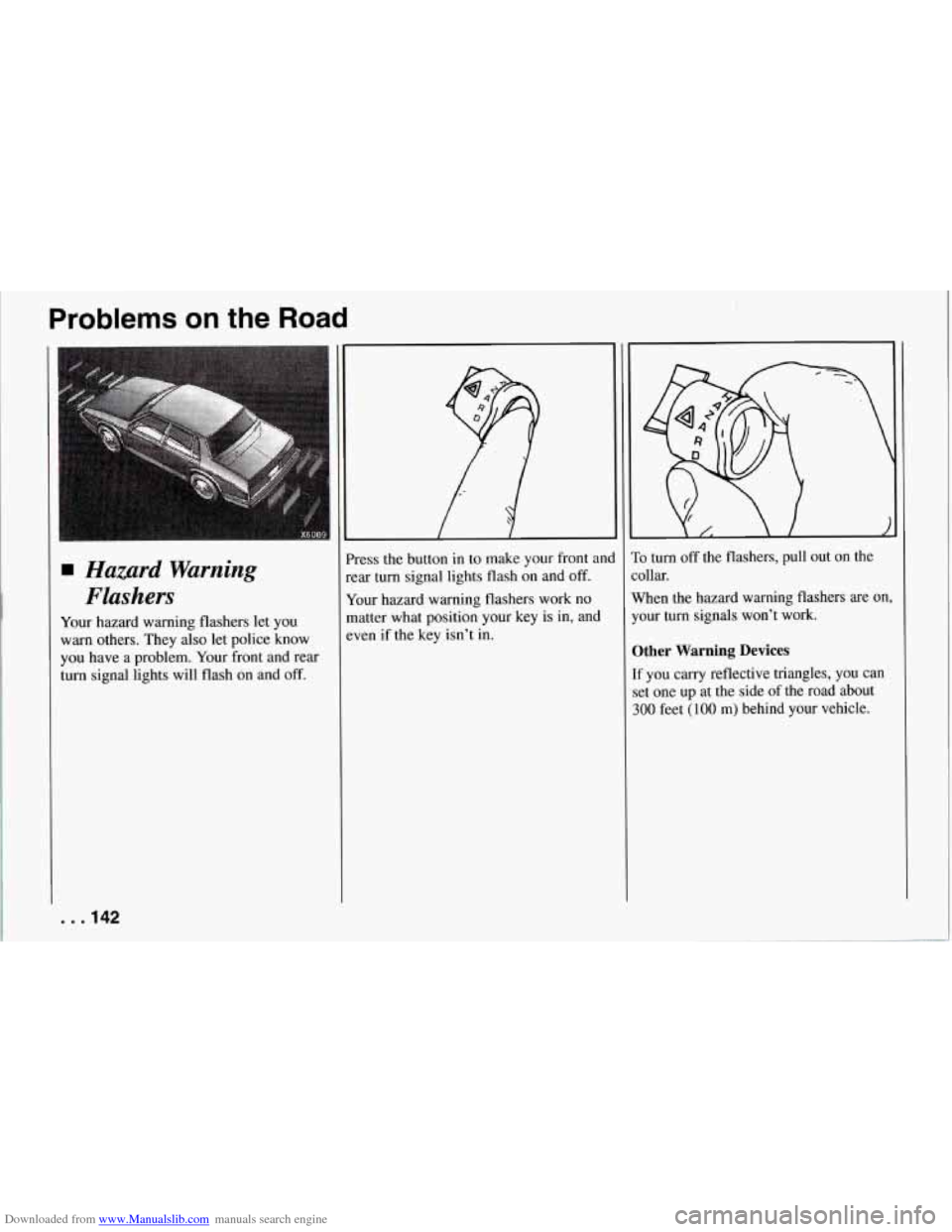
Downloaded from www.Manualslib.com manuals search engine Problems on the Road
Hazard Warning
Flashers
Your hazard warning flashers let you
warn others. They also let police know
you have a problem. Your front and rear
turn signal lights will flash on and off.
'ress the button in to make your front an(
:ar turn signal lights flash on and off.
lour hazard warning flashers work no
matter what position your
key is in, and
ven if the key isn't in.
'0 turn off the flashers, pull out on the
ollar.
Vhen the hazard warning flashers are
on,
'our turn signals won't work.
Ither Warning Devices
f you carry reflective triangles, you can
et one up at the side of the road about
100 feet (100 m) behind your vehicle.
. . .I42
Page 144 of 274
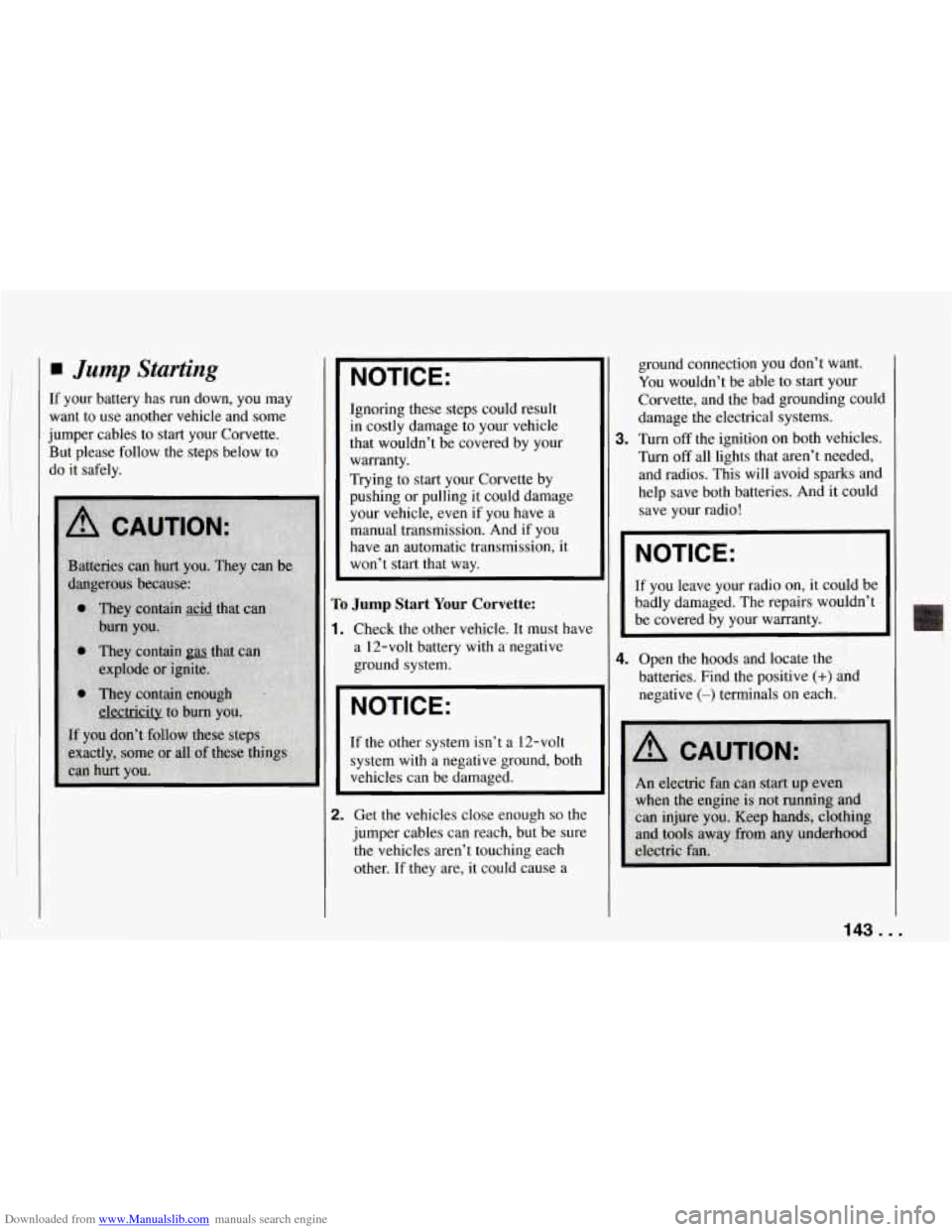
Downloaded from www.Manualslib.com manuals search engine 1 Jump Starting
If your battery has run down, you may
want to use another vehicle and some
jumper cables to start your Corvette.
But please follow the steps below to
do it safely.
NOTICE:
Ignoring these steps could result
in costly damage to your vehicle
that wouldn’t be covered by your
warranty.
Trying to start your Corvette by
pushing or pulling it could damage
your vehicle,
even if you have a
manual transmission. And if you
have an automatic transmission, it
won’t start that way.
Ib Jump Start Your Corvette:
1. Check the other vehicle. It must have
a 12-volt battery with a- negative
ground system.
NOTICE:
If the other system isn’t a 12-volt
system with a negative ground, both
vehicles can be damaged.
2. Get the vehicles close enough so the
jumper cables can reach, but be sure
the vehicles aren’t touching each
other. If they are, it could cause a ground connection you don’t
want.
You wouldn’t be able to start your
Corvette, and the bad grounding could
damage the electrical systems.
3. Turn off the ignition on both vehicles.
Turn
off all lights that aren’t needed,
and radios. This will avoid sparks and
help save both batteries. And it could
save your radio!
I NOTICE:
I
If you leave your radio on, it could be
badly damaged. The repairs wouldn’t
be covered by your warranty.
4. Open the hoods and locate the
batteries. Find the positive
(+) and
negative
(-) terminals on each.
143 ...
Page 145 of 274
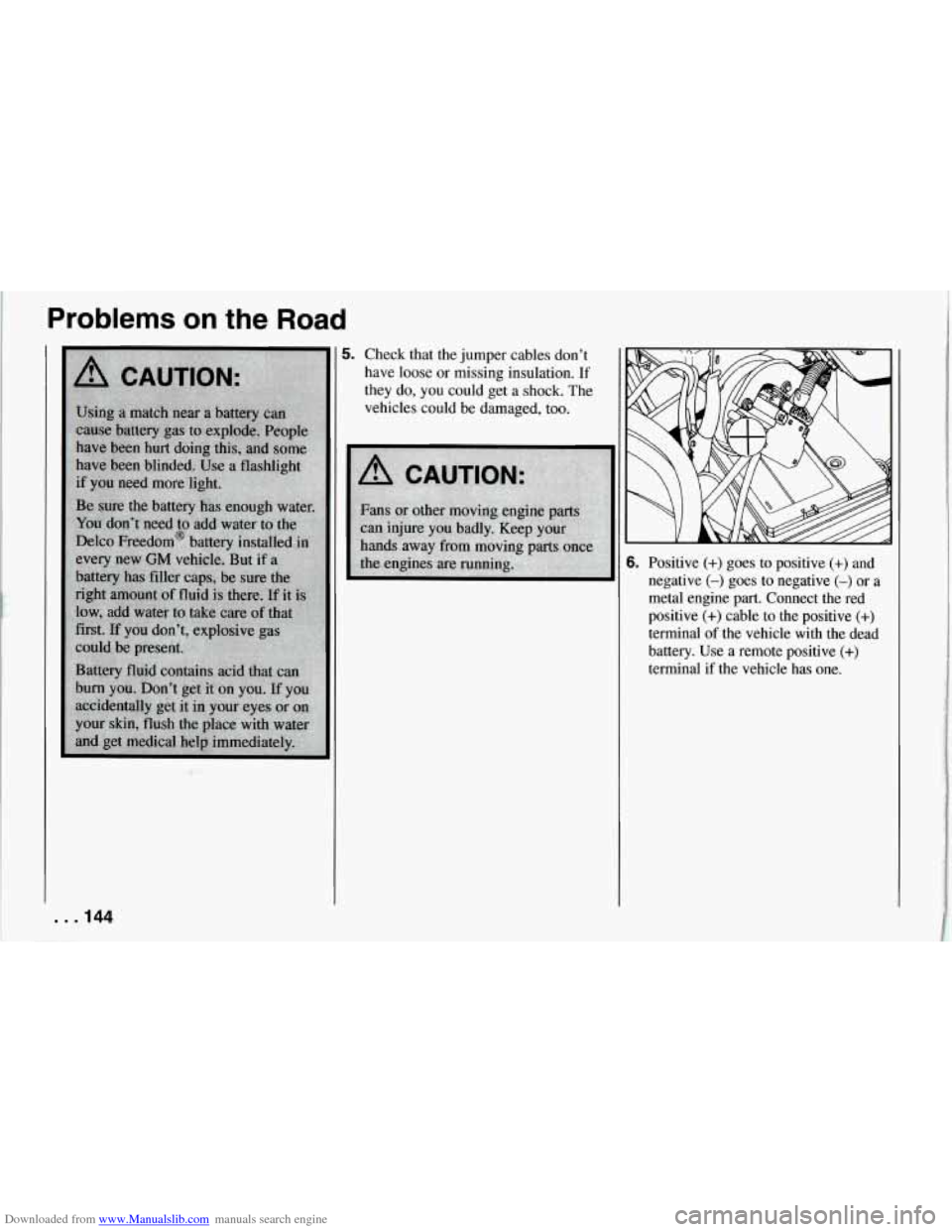
Downloaded from www.Manualslib.com manuals search engine Problems on the Road
5. Check that the jumper cables don’t
have loose or missing insulation. If
they do,
you could get a shock. The
vehicles could be damaged, too.
6. Positive (+) goes to positive (+) and
negative
(-) goes to negative (-) or a
metal engine part. Connect the red
positive
(+) cable to the positive (+)
terminal of the vehicle with the dead
battery. Use a remote positive
(+)
terminal if the vehicle has one.
. . .144
Page 146 of 274
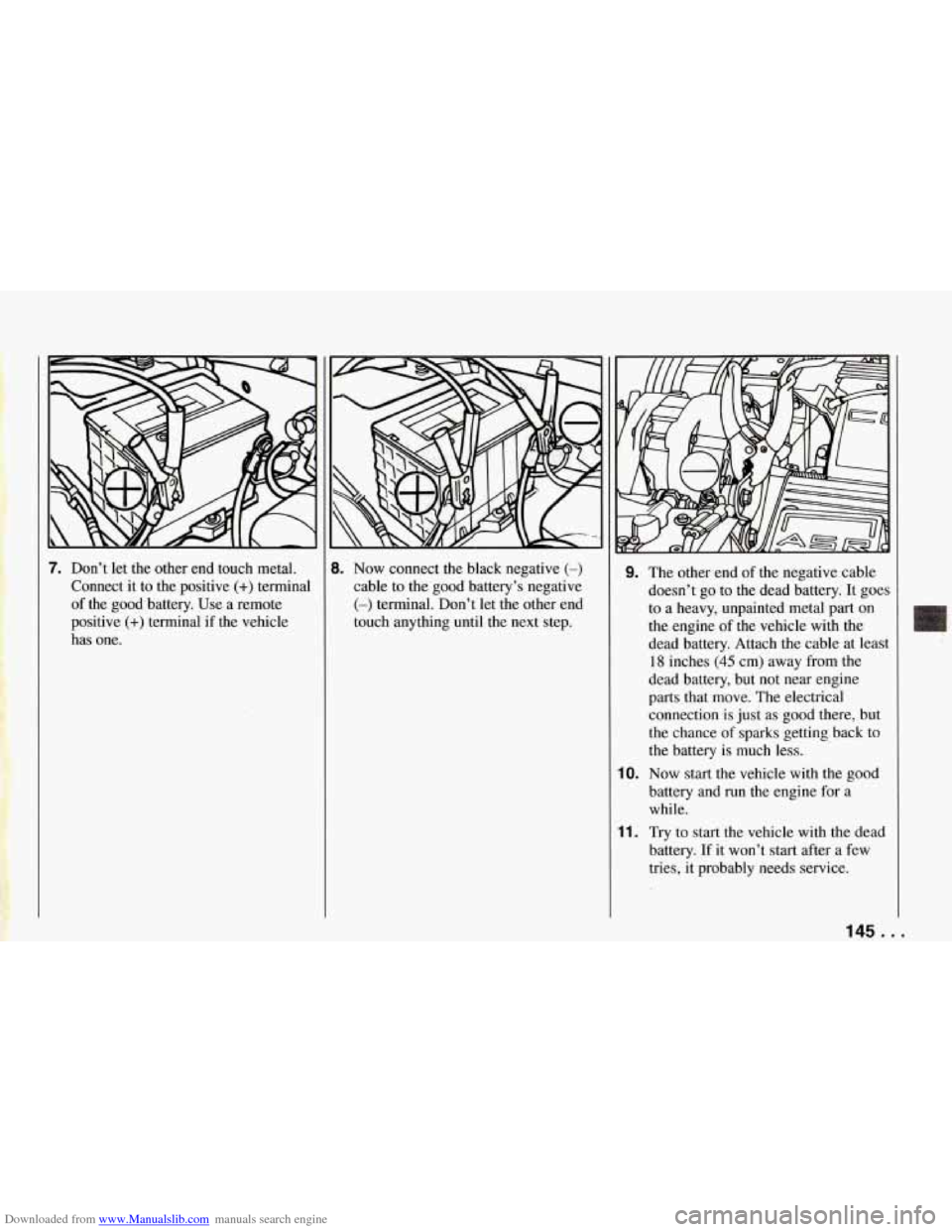
Downloaded from www.Manualslib.com manuals search engine 7. Don’t let the other end touch metal.
Connect it to the positive
(+) terminal
of the good battery. Use a remote
positive
(+) terminal if the vehicle
has one.
8. Now connect the black negative (-)
cable to the good battery’s negative
(-) terminal. Don’t let the other end
touch anything until the next step.
9. The other end of the negative cable
doesn’t go to the dead battery. It goes
to a heavy, unpainted metal part on
the engine of the vehicle with the
dead battery. Attach the cable at least
18 inches (45 cm) away from the
dead battery, but not near engine
parts that move. The electrical
connection is just as good there, but
the chance of sparks getting back to
the battery is much less.
10. Now start the vehicle with the good
battery and
run the engine for a
while.
11. Try to start the vehicle with the dead
battery. If it won’t start after a few
tries, it probably needs service.
145 ...
Page 147 of 274
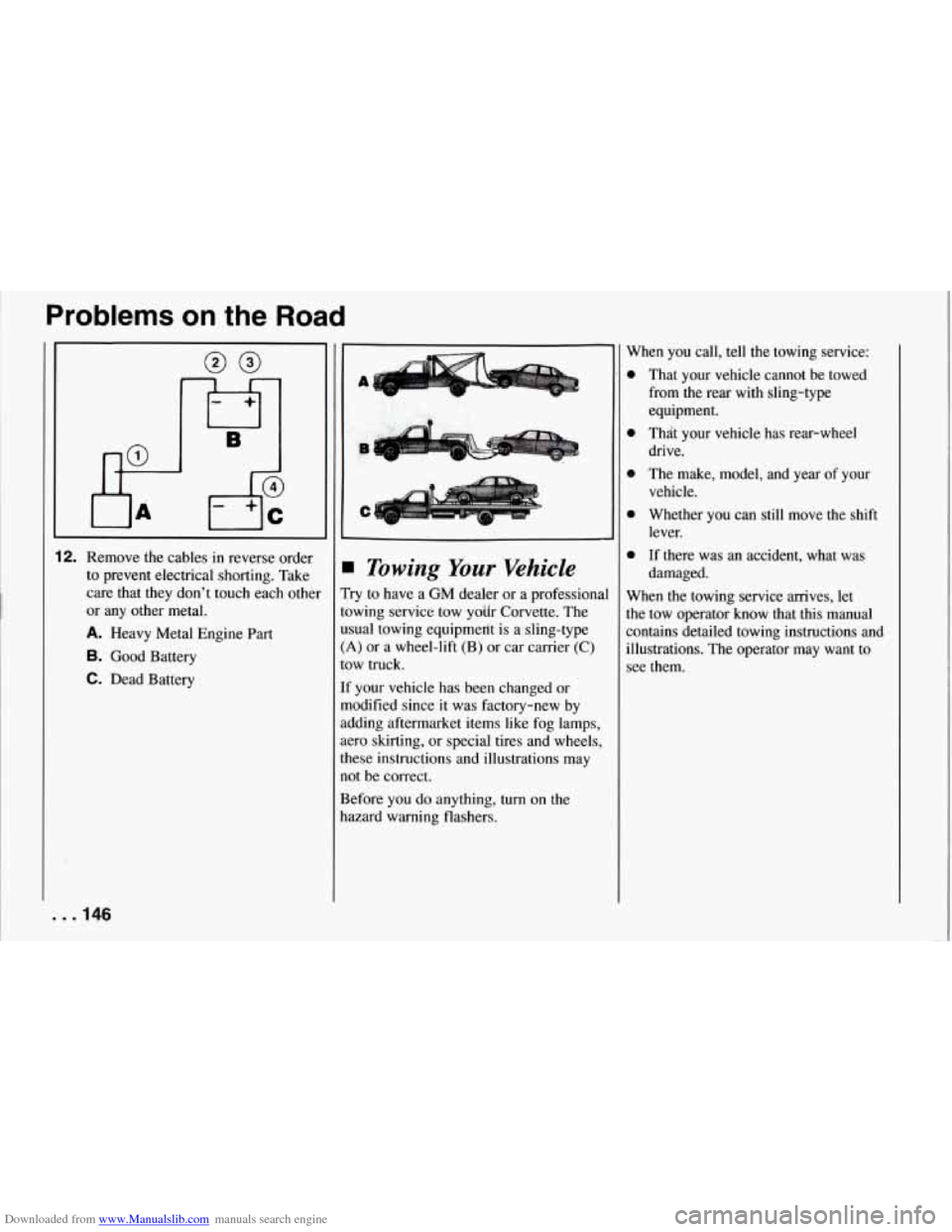
Downloaded from www.Manualslib.com manuals search engine Problems on the Road
I
I5 B
1
+--
12. Remove the cables in reverse order
to prevent electrical shorting. Take
care that they don’t touch each other
or any other metal.
A. Heavy Metal Engine Part
6. Good Battery
C. Dead Battery
. . .I46
WC
-
I
n
tc
U!
(t’
ta
If
rn
ac
at
th
nc
B
h;
A VI
1 Towing Your Vehicle
ry to have a GM dealer or a professional
)wing service tow your Corvette. The
sua1 towing equipmetit is a sling-type
4) or a wheel-lift (B) or car carrier (C)
)W truck.
’ your vehicle has been changed or
lodified since it was factory-new by
jding aftermarket items like fog lamps,
:ro skirting, or special tires and wheels,
Lese instructions and illustrations may
It be correct.
efore you do anything, turn on the
3zard warning flashers. When you call, tell the towing service:
0
0
0
0
0
That your vehicle cannot be towed
from the rear with sling-type
equipment.
That your vehicle has rear-wheel
drive.
The make, model, and year
of your
vehicle.
Whether you can still move the shift lever.
If there was an accident, what was
damaged.
When the towing service arrives, let
the tow operator know that this manual
contains detailed towing instructions and
illustrations. The operator may want to
see them.
Page 148 of 274
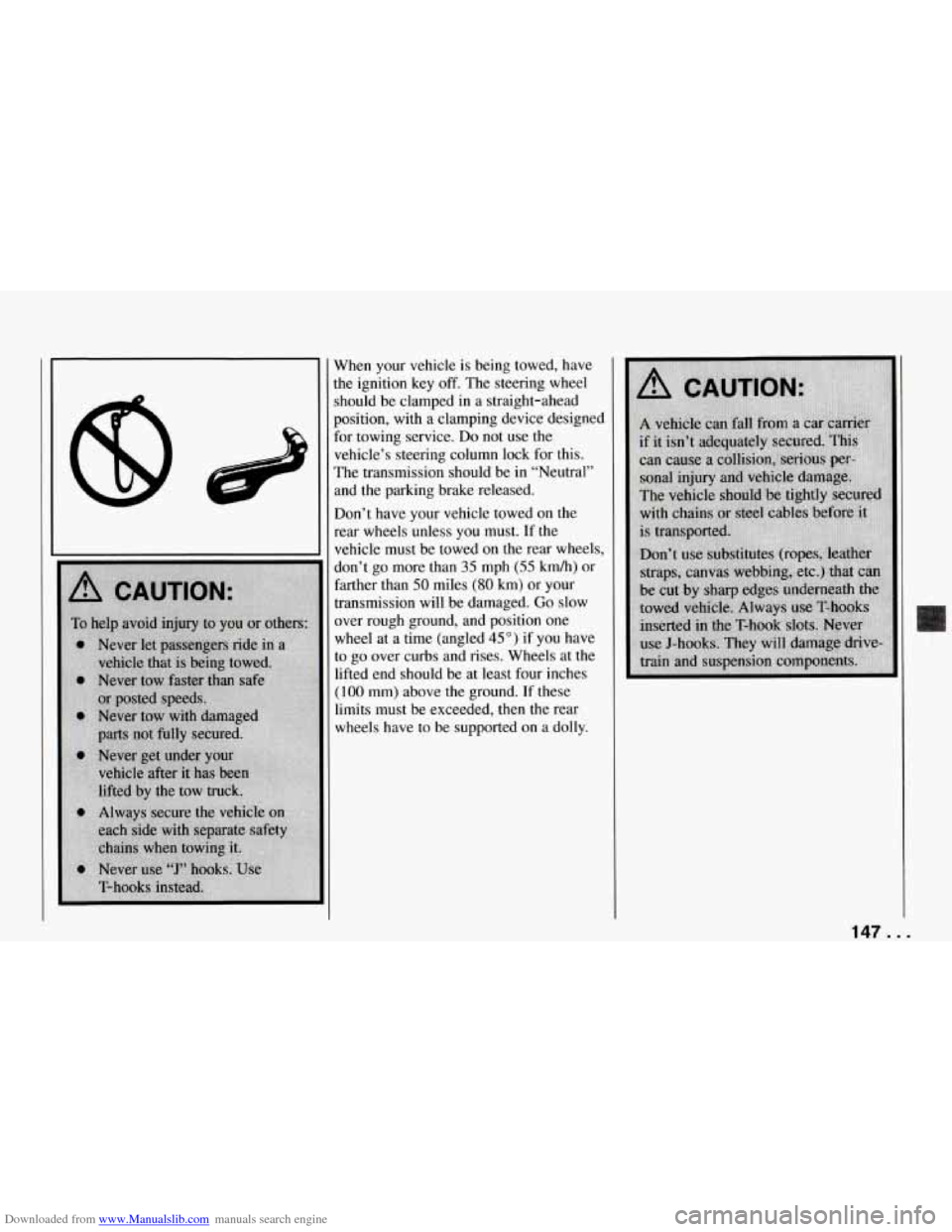
Downloaded from www.Manualslib.com manuals search engine IC
When your vehicle is being towed, have
he ignition key
off. The steering wheel
should be clamped in a straight-ahead
position, with a clamping device designed
For towing service.
Do not use the
vehicle’s steering column lock for this.
The transmission should be in “Neutral”
and the parking brake released.
Don’t have your vehicle towed
on the
rear wheels unless you must. If the
vehicle must be towed on the rear wheels,
don’t go more than
35 mph (55 kmh) or
farther than
50 miles (80 km) or your
transmission will be damaged.
Go slow
mer rough ground, and position one
wheel at a time (angled
45”) if you have
to go over curbs and rises. Wheels at the
lifted end should be at least four inches
(1 00 mm) above the ground. If these
limits must be exceeded, then the rear
wheels have to be supported
on a dolly.
14f ...
Page 149 of 274
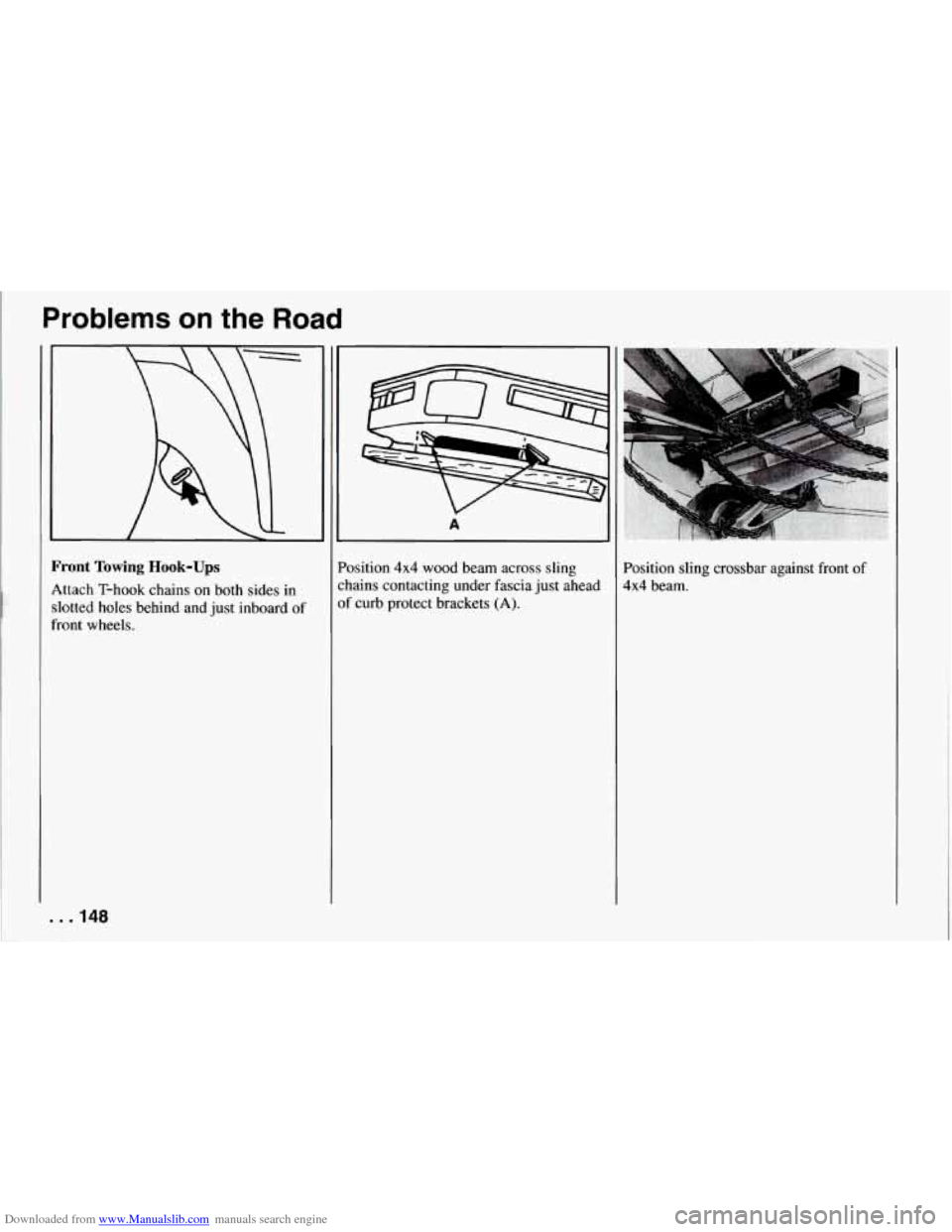
Downloaded from www.Manualslib.com manuals search engine Problems on the Road
Front Towing Hook-Ups
Attach T-hook chains on both sides in
slotted holes behind and just inboard
of
front wheels.
. . .I40
A I
Position 4x4 wood beam across sling
chains contacting under fascia just ahead of curb protect brackets
(A).
Position sling crossbar against front of
4x4 beam.
Page 150 of 274
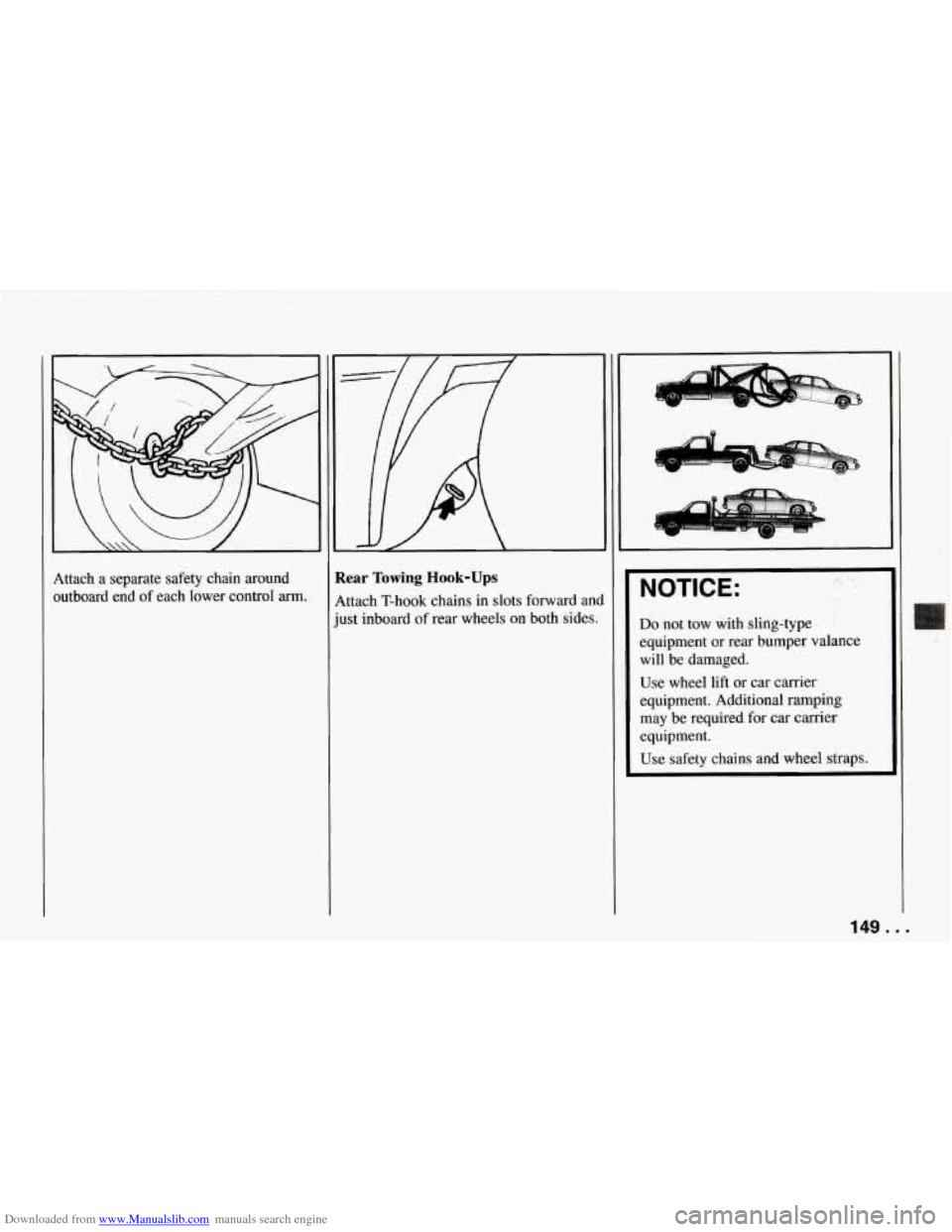
Downloaded from www.Manualslib.com manuals search engine c
Attach a separate safety chain around
outboard end of each lower control
arm.
:ear Towing Hook-Ups
ittach T-hook chains in slots forward anc
lst inboard
of rear wheels on both sides.
NOTICE:
Do not tow with sling-type
equipment or rear bumper valance
will be damaged.
Use wheel lift or car carrier
equipment. Additional ramping
may be required for car carrier
equipment.
Use safety chains
and wheel straps.
1
149 ...